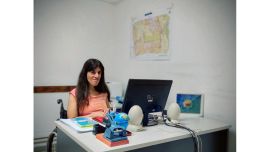A pre-Inca mummy, between 800 and 1,200 years old, was discovered in perfect condition in an ancient mud urban centre on the outskirts of Lima, the leader of the excavation team reported Tuesday.
The remains are of a child, biological sex currently unknown, who was likely about 12 or 13 years old with an approximate height of 1one metre 30 centimetres.
"We have found the mummy of an adolescent between 800 and 1,200 years old in a two-metre-deep funerary structure at the archaeological site of Cajamarquilla," archaeologist Yomira Huamán, head of the Cajamarquilla Archaeological Project, told AFP.
The burial structure was covered with a large mud rock.
The child was probably a part of the Ichma community, who lived on the land about 900 years ago, before being annexed by the Inca Empire in the 15th century.
According to Huamán, the coarse sand in the area, with high salt components, would have generated a natural mummification process, which has allowed the arms, forearms and both legs to retain remains of skin. The head, although separated from the body, maintains locks of hair, and in the jaw, parts of the teeth can still be seen.
"The finding is very important due to its state of conservation," the researcher leading the team of archaeologists from the University of San Marcos explained.
Next to the mummy, a boleadora ("stone weapon"), a mate (plate), a copper needle, remains of textiles, corn and chili peppers were found.
In February 2022, archaeologists found 20 mummies in Cajamarquilla, including eight children.
Cajamarquilla was an urban centre where multiple functions including administrative, domestic and residential sectors were conducted.
The place is considered a pre-Hispanic mud city, which could have housed between 10,000 and 20,000 people in an area of 167 hectares.
It was built around the year 200 BC and was occupied until the year 1500.
The city is located 24 km east of Lima and is one of the largest archaeological complexes in the Peruvian capital.
– TIMES/AFP



















Comments